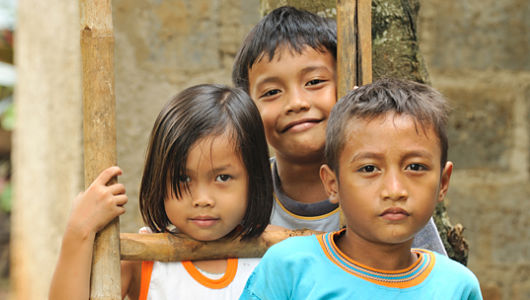New UNICEF Report Notes Indonesia’s Successes

A new report released by UNICEF in late June has highlighted the significant achievements of nations across the globe in safeguarding child rights.
The Progress for Children Report, which examined international efforts to meet UN Millennium Goals related to the advancement of children, specifically noted certain accomplishments Indonesia has recorded in regards to strengthening child protection and security.
Since the advent of the MGD’s in 2000, the Pacific Island nation of Indonesia has successfully reduced the mortality rate for children under 5 from 84 deaths per 1,000 live births in 1990, to 29 deaths per 1,000 live births in 2015. These figures also represent significant regional advancements, as the average number of deaths per 1,000 live births decreased dramatically from 58 in 1990 to only 17 in 2015.
Indonesian officials have cited such health advancements as products of efforts to reduce national fertility rates, which have decreased 1.3 percent in the past 25 years, and improvements in maternal healthcare programming. As opposed to 1992, where only 36 percent of live births recorded attendance of skilled medical professionals, officials reported a dramatic increase to 83 percent skilled attendance in 2012.
Such efforts by the government to promote stronger home construction, offer wider access to clean water and sanitation, and generate better education and health care systems have assisted in the growth of the nations economy and subsequent increases in social expenditures. The government is currently planning to introduce a universal health care program by 2019, an advancement that would solidify national efforts to improve the quality of life available for Indonesian children.
Government officials also boasted a 95 percent net primary school attendance record last year, which brought the nation equal to the regional average of primary education attendance for East Asia and the Pacific.
While Indonesia has demonstrated strong efficacy in advancing the protection of children’s rights, many officials have warned that the current climate of child poverty within the country must be further addressed.
According to the World Bank, of a national population comprised of over 250 million people, almost 30 million of these people still live below the poverty line. Despite recent efforts to improve sanitation facilities, access to such public works systems remains at 68 percent of the population—a large shortcoming of the 86 percent target outlined within the Millennium Development Goals. Indonesia also recorded a remarkably high maternal mortality rate last year, with 190 maternal deaths per 100,000 live births. Officials hope continued efforts to provide stronger health care and sanitation systems across the country will assist in reducing such statistics.
Tata Sudrajat, the Families First Director for Save the Children, recently stated in an interview, “Although Indonesia is already a middle income country according to World Bank standards, nearly 44 million Indonesian children still live on under $2 per day. That’s about 50 percent of Indonesia’s child population.”
Sudrajat continued to explain that a major obstacle for the security of children’s rights within Indonesia remains the prevalence of sexual violence against children between the ages of 13 and 18. Citing data from a recent government study, she explained that on average one in 12 males and one in 19 females within this age range are annually affected by sexual violence. Claiming that such crimes often occur close to victim’s homes, Sudrajat stated, “Research on sexual violence against children often finds that the perpetrator is someone who is personally close to the child, which makes children very vulnerable to these sorts of crimes.”
Sudrajat also explained in her interview that campaigns for public awareness regarding child abuse and the socio-cultural roots of these crimes are effective methods for promoting stronger understanding of such issues in order to prevent future incidents. With UNICEF estimating in 2013 that 34.2 percent of the national population, or about 85 million people, are under the age of 18, the continual responsibility to promote and protect the basic rights of Indonesian children is enormous.
– James Thornton
Sources: The Jakarta Globe, Economist, World Bank
Photo: University of Victoria
